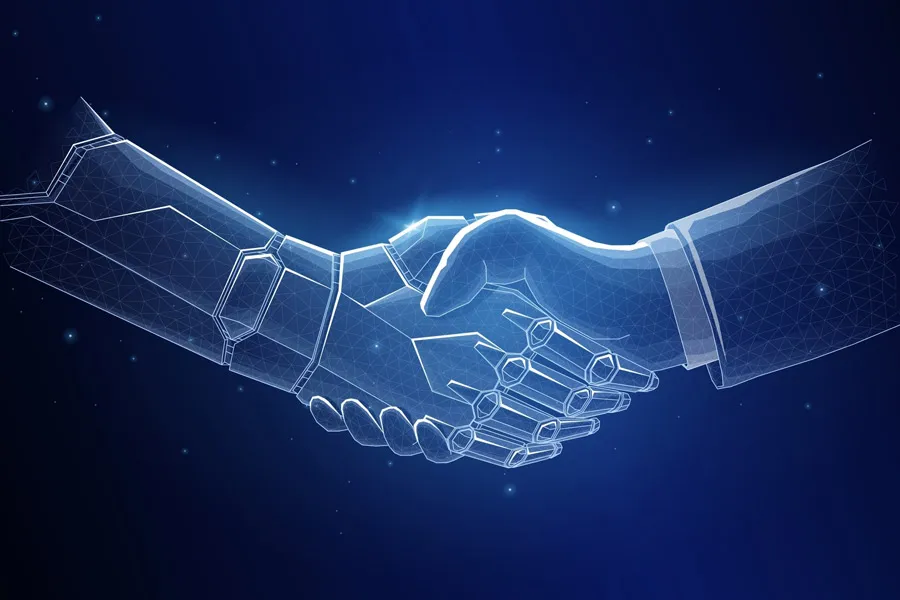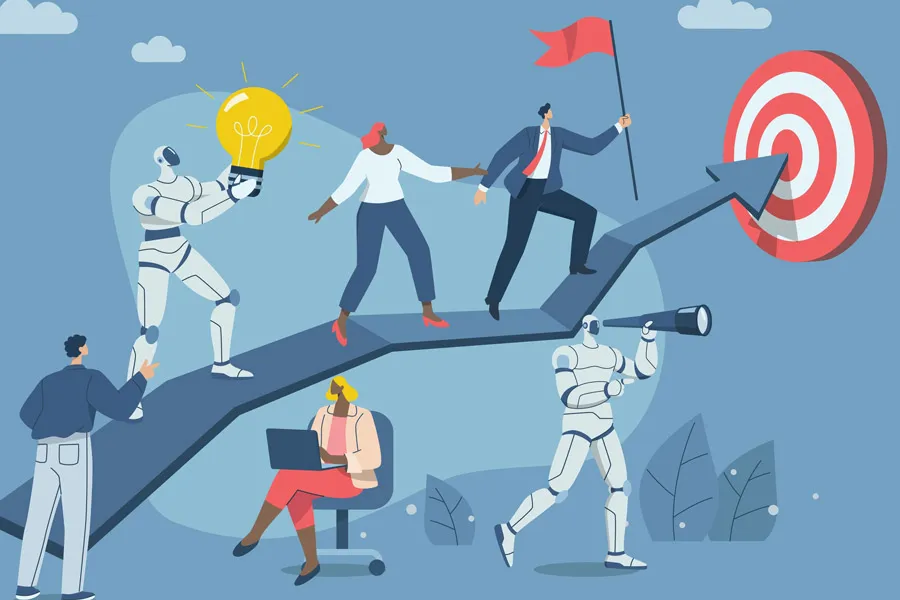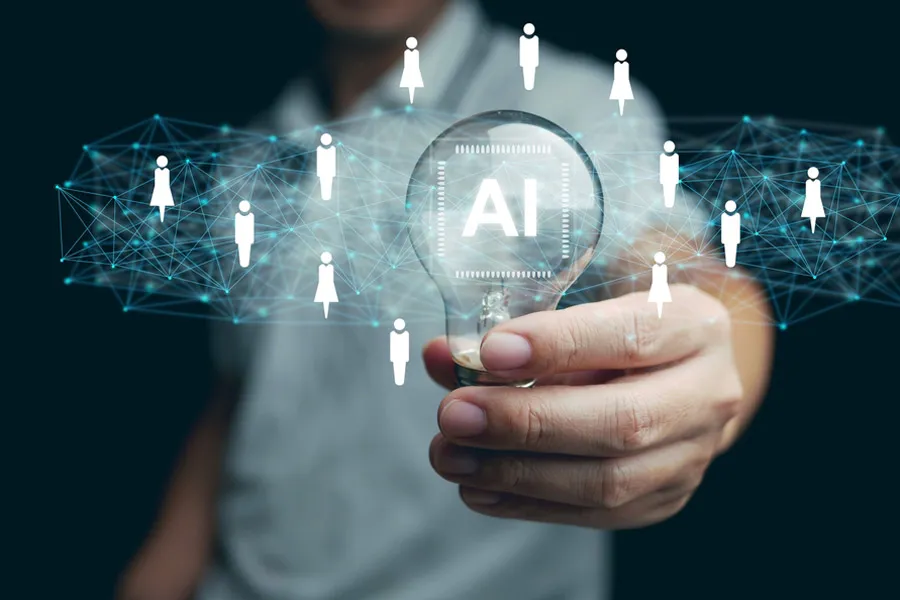Speakers at the incMYT Festival were of one mind that AI (artificial intelligence) has consolidated itself as a strategic pillar of the modern business era.
The consultant Horacio Marchand explained that AI should serve as the strategic foundation of any business.
“From a business strategy perspective, AI can and should be viewed as a tool that will help us define priorities and programs that make a difference in driving organizations to grow and strengthen their market position,” he said.
Having identified its use cases, which range from data classification and analysis to its potential as an assistant capable of making autonomous decisions, the specialists pointed out that incorporating AI into organizational schemes should be essential.
CONECTA has compiled the main trends, advice, and challenges impacting the incorporation of AI into businesses presented during the three days of the event.

1. AI should be integrated based on a common problem
According to Marchand, for an AI implementation strategy to have a real impact on an organization, its implementation must be based on a common problem.
Kurt Yanez, Dell Business Development Leader for AI and Data Science in Mexico, said that instead of adopting AI simply to follow a ‘trend,’ companies should identify specific challenges for which AI provides concrete and measurable solutions.
“It is essential to start with the problem, not the solution (...) ideally, the starting point is a common, specific error, which involves determining and measuring the size of the impact,” explained Yanez.
This approach makes AI adoption more organic and aligned with business needs, which is essential not only for innovation but also for AI innovation.
“Integrating AI based on a common problem requires that initiatives be horizontal and integral as opposed to vertical and isolated (...) AI should be focused on reinforcing a well-articulated, properly implemented, market-centric strategy,” said Marchand.
2. People at the center and as part of the process
For his part, Yañez stressed that AI does not replace creativity or human talent; on the contrary, it should complement them to improve decision making and optimize processes.
On the same topic, Groq executive José Menéndez explained that the key is to design AI strategies in which collaborators play a part in development and implementation, highlighting the importance of keeping the “human in the loop.”
“Involving people in AI integration generates a sense of belonging and reduces resistance to change (...) we are empowering them in a way and that generates more closeness than if it they perceive it as something alien,” said Yanez.
“We should bear in mind that at the end of the day what you are selling is not the tool; what you are selling is workand specialists (...) that’s what entrepreneurs do,” remarked Menéndez.
Telcel executive Carlos Zenteno pointed out that a common mistake made by many companies is imposing technological solutions without taking team training and adaptation into account, which can lead to a demotivating learning curve.

3. AI strategy should be based on gaining a competitive advantage
According to Marchand, for an AI strategy to be innovative and successful, it should be based on and strengthen the company’s competitive advantage (order processing time, satisfaction, variety, among others).
According to the Tec graduate, it is not about applying AI in a generic way but about identifying how this technology could enhance what makes the organization unique, from improvements in order processing efficiency to product customization.
Italian consultant Andrea Lora agreed that companies which have been able to integrate AI based on their competitive advantages are those that have been able to differentiate themselves in their market without having to engage in price wars; this included placing more focus on customer attention.
“What also makes AI strategy different is how much power is given to the customer (...) it could involve greater access to information, more customization in exchange for data, or lower exchange costs (...),” said the Italian.
4. Change your mindset regarding the role of AI
Lora went on to explain that for AI integration to be effective, companies should change their mindset concerning the role of this technology, which should be perceived as a strategic enabler and not an auxiliary tool.
Instead of wondering how to fit AI into existing processes, companies should rethink their strategies based on the type of AI being accessed (predictive or generative) and its scope (internal or external).
Therefore, in the light of these two considerations, the panelist explained four quadrants that determine the type of AI implementation:
- ‘Tell Me’ (predictive AI for internal functions) may be used to generate insights and predictions.
- ‘Tell My Customer’ (predictive AI for external functions) may be used for conversational customer service models.
- ‘Do For Me’ (generative AI for internal functions) may be used in process automations and simulations.
- ‘Do For My Customer’ (generative AI for external functions) may be used to create new products and services.
This last one, in turn, involves anticipating trends and designing strategies that take advantage of artificial intelligence capabilities to generate new business opportunities.

5. AI integration strategy should be hybrid
Dell director Kurt Yañez encouraged the business community to integrate hybrid AI solutions that combinecommercial criteria (costs, utility, etc.) with technological innovation.
Yanez emphasized the importance of looking at factors such as cost, utility and operational efficiency, while encouraging the exploration of new disruptive solutions that lead to sustainable implementation.
This approach also involves AI integration at multiple organizational levels, thereby combining issues such as automated modeling with human judgment and oversight.
In addition, a hybrid strategy facilitates progressive and adaptive incorporation and allows companies to evaluate the impact of AI in different areas (with measurable KPIs). This reduces risk and maximizes effectiveness while leaving room for adjustments.
“It is better to fumble the ball sometimes(...) first, focus on the what and then the how,” said Marchand.
6. Empower AI based on the strengths of your business
Marchand underscored that AI alone is not a magical solution; its true potential is unlocked when it is used with in-depth understanding of the market and the company’s strengths.
Before investing in AI, speakers like Benavides suggested that organizations should analyze the areas in which it could make a difference and how it could be aligned with their business strategy.
Marchand explained how some companies in the retail sector have been able to use AI to improve customer experience through customized recommendations and inventory optimization.
However, in other industries like manufacturing, AI may be more useful in supply chain optimization, which makes ‘pros’such as customization counterproductive due to the nature of the sector.
7. Relevance and efficiency should be prioritized
When adopting artificial intelligence, the priority should not be to simply innovate for the sake of innovation, but to ensure that the technology adds relevance and efficiency to the business, Yanez said during one of the workshops.
“Many organizations make the mistake of implementing AI solutions without a clear purpose (...) if a solution does not improve the experience, optimize costs, or increase productivity, then its usefulness is questionable.”
“AI should not just be innovative, it should also be functional and profitable”, he added.
According to Marchand, more than just trying to be different, the focus should be on being relevant. He went on to explain that this should respond to the market in which a company is positioned as a leader.
“AI should not only be innovative, but also functional and profitable.” - Kurt Yanez
8. The future of entrepreneurial AI is in “Agentics”
Both Menéndez and Zenteno remarked how the next evolutionary step in AI transcends the generative branch and focuses on so-called “Agentics.”
These autonomous AI systems, Zenteno explained, are capable of making decisions and executing actions with a high degree of independence; therefore, the panelist envisions their utility beyond data analysis or task automation.
“The potential of Agentics lies in the fact that they can make autonomous decisions (...) these agents have analytical capabilities that enable them to carry out hyper-automation and hyper-personalization processes,” he clarified.
For example, they are expected to be able to manage inventories and prices dynamically according to demand; optimize delivery routes; improve service times; as well as coordinate and manage activities and schedules.
9. Understand that AI is not omnipotent, and its evolution is not infinite
Despite progress being made in AI, Menéndez explained that it is essential to understand that this technology has limits and is not an all-encompassing solution; he went on to explain how its capabilities are often overestimated.
“We must also remember that AI depends on the data it is fed and is subject to errors and inaccuracies,” he said.
In addition, Yanez reminded us that AI evolution is neither infinite nor linear and, despite remarkable progress made in machine learning and natural language processing, each step forward requires investments in data and training.
“Companies adopting AI should be aware of its limitations (...) It is crucial for organizations to have a realistic approach to AI as a powerful, but not infallible tool.”
The key is to leverage its strengths without losing sight of the need for oversight and regulation, while understanding the need to balance automation with human intervention, added Benavides.
"It is crucial for organizations to have a realistic approach to AI as a powerful, but not infallible tool.” - Kurt Yañez
10. A global outlook does not limit AI innovation
Sean Randolph, senior director at the Bay Area Council Economic Institute, explained that while there are concerns about AI innovation, there are also areas of opportunity in a global panorama currently undergoing considerable change.
In the case of the U.S., Randolph felt that the negative impact of new tariffs and the Trump administration’s approachis actually limited to physical goods, and not so much to software and services.
“Regulatory uncertainty and the possibility of a recession inhibits financing. However, there is still entrepreneurship and technological innovation on a global scale,” he clarified.
Therefore, the director explained, places like Silicon Valley and even San Francisco continue to encourage and invite entrepreneurs, particularly in the AI sector, for the purpose of nurturing innovation.

11. Cybercrime evolves as AI makes progress
Thiago Crote, a strategic AI cybersecurity consultant at Google, explained how advances in artificial intelligence on a par with other technologies have also triggered an evolution in cybercrime threats.
“Companies are making use of artificial intelligence and, as a result, new solutions are being developed along with this evolving technology (...) but it all comes with a dark side that we need to understand.”
According to the consultant, some of the main drivers of this new era of cybercriminals involve areas of interest such as hacktivism, espionage, financial gain, challenge/recognition seeking, and retribution.
Thus, the expert added, possessing a cyber-resilience scheme is imperative for dealing with this kind of attack since cybercrime, in addition to economic losses, can have an irreparable impact on public trust in the company.
Moreover, Crote recommended investing in protection software as one of the most vulnerable areas is private data and information belonging to customers and employees that can be used for phishing purposes.
12. AI’s potential is in the data on which it is trained
Zenteno pointed out that artificial intelligence cannot operate in a vacuum and that its performance depends directly on the quality and quantity of data on which it is trained.
“An AI model will only be as good as the information it receives, so companies should prioritize data collection, cleansing and management as a fundamental part of their technology strategy,” Yanez said.
Proper data management allows AI to be more accurate in its predictions and more efficient in its recommendations; therefore, experts emphasize the importance of “clean data.”
Consequently, companies should ensure that the collection and use of information complies with privacy and security regulations. He pointed out that ethics in data handling is a key aspect that will define the future of corporate AI.

13. The biggest investment should be in human talent
While artificial intelligence is a key technology for digital transformation, its success depends not only on algorithms but on the human talent that designs, implements, and supervises them, Yanez underscored.
Investing in AI without developing team capabilities in the company may result in ineffective integration; therefore, it is critical to prioritize employee training and skills development.
AI training should not just be given to technology specialists but at all levels of the organization as, according to Yanez, this also fosters a learning and ownership culture.
Marchand added that the juxtaposition of AI with human intuition and experience is what really generates competitive advantages.
14. Looking for the right time to integrate AI is crucial
As Menéndez emphasizes, because not all organizations are ready to adopt AI, forcing its integration without a solid foundation can generate more problems than benefits.
For him, the ideal time to adopt AI varies across industries and according to the business context because for a company that has not yet digitized its core processes, introducing AI too early could lead to confusion and internal resistance.
“The key is to move forward progressively, ensuring that each adoption phase is sustainable,” Zenteno recommended.
Yanez reminds us that sudden change may cause employees to reject the initiative, while introducing it gradually along with training and support facilitates the transition.
15. Innovating with AI in your business requires a ‘startup mentality’
Lora wrapped up by saying that entrepreneurs should adopt a startup mentality to innovate with artificial intelligence; in other words, they should be open not only to learning, but to constantly experimenting and questioning.
The biggest obstacle to innovation is often not the technology itself, but resistance to change and rigidity in the way we operate.
Organizations that maintain a mindset of constant exploration will be better prepared to lead the digital transformation and set themselves apart in their industries, the panelist explained.
“Questions that we sometimes think are silly tend to inspire us to innovate because they make us think differently and because they are seldom asked,” he said.
About the incMTY Festival
incMTY is a platform for open innovation, entrepreneurship, investment, and talent in Latin America.
It has a community of more than 126,000 early adopters, innovators, businessmen, entrepreneurs, researchers, and directors.
Its high-impact events, especially the incMTY Festival, bring together ecosystem stakeholders seeking to turn the “inc” mission into: “innovate,” “network,” and “create”.
Through INCmty, Tec de Monterrey encourages the entrepreneurial community to achieve this as one of the ways it manifests innovation, a central aspect on which the institution is focused.
Juan Pablo Murra, Rector of Tecnológico de Monterrey, reaffirmed that incMTY was launched twelve years ago with the intention of its becoming a platform at the service of entrepreneurs.
“We realized very quickly that entrepreneurship is not simply about supporting a few entrepreneurs, but that we needed to create ecosystems conducive to supporting them,” Murra said.
The 2025 edition of the incMTY Festival was held from March 18 to 20 at Cintermex on Tec de Monterrey’s Monterrey campus and the UANL’s Mederos campus.
READ ALSO:





